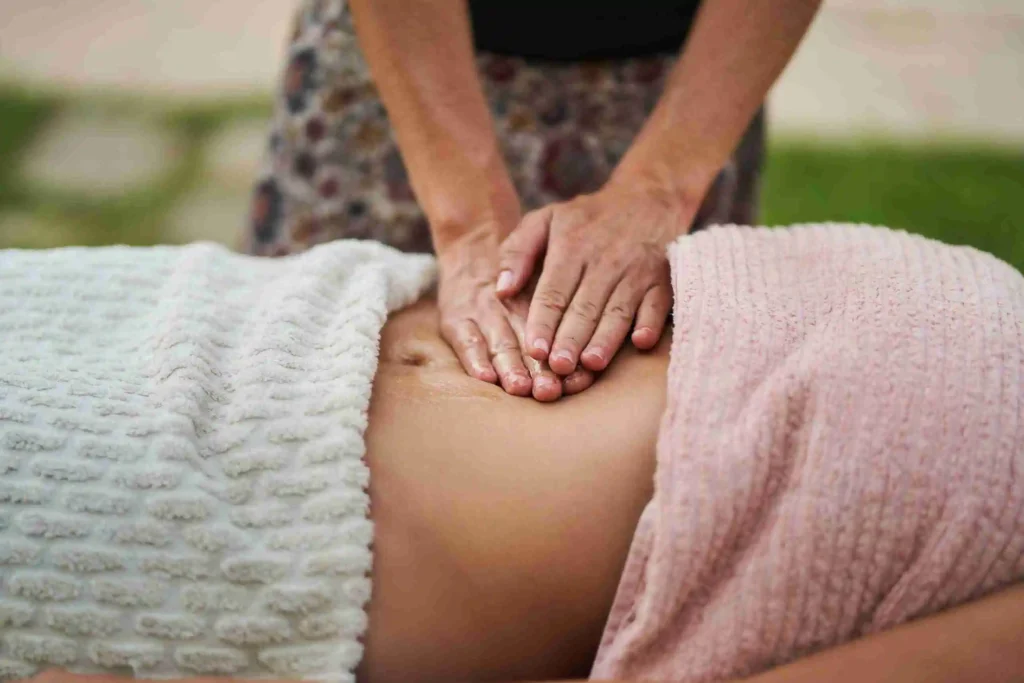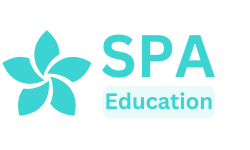PRENATAL/POSTNATAL MASSAGE

Prenatal/Postnatal Massage: what is it?
Massages both prenatal and postnatal are specific therapeutic interventions meant for women either during pregnancy or following childbirth. These massages concentrate on reducing the particular physical discomfort associated with the phases of pregnancy and postpartum recovery. While postnatal massage is best for newly mothers following deliveries, prenatal massage is typically done throughout the second and third trimesters of pregnancy.
While postnatal massage concentrates on helping recovery from childbirth, alleviating muscle tension, and restoring balance to the body after the physical strain of pregnancy and delivery, prenatal massage uses gentle techniques to relax the body, increase circulation, and reduce stress.
Advantages of prenatal/postnatal massages
Advantages of prenatal massage:
- Eases muscle tension and pain.
Among the major physical changes the pregnancy brings about are changes in posture and weight increase. Especially in the lower back, hips, and legs, these physical changes might cause muscle stress. Relief from these typical pregnancy-related aches and pains might come from prenatal massage. - Lessens anxiety and stress.
Pregnancy’s hormonal changes could induce emotional swings. By helping to soothe the nervous system, lower anxiety, and improve mental well-being, prenatal massage lets one have a more serene pregnancy experience. - Boosts circulation and lowers swelling.
Because of changed circulation and higher blood volume, many women get swelling in their legs, ankles, and feet as their pregnancy advances. Prenatal massage aids the baby’s healthy flow of oxygen and nutrients by improving blood circulation, so helping to lower edema. - Enhances quality of sleep.
Particularly in the later stages, pregnancy sometimes interfebs with sleep. By helping the body and mind to relax, prenatal massage reduces pain and encourages relaxation, therefore improving the quality of sleep.
Benefits of post-natal massage
- Support for Postpartum Healing
Following birth, the body must heal from the physical strain of pregnancy and delivery. Postnatal massage promotes general body healing, helps restore muscle tone, and lessens edema. It also helps correct muscle imbalances brought on by bearing a baby through pregnancy. - Lessens postpartum pain
From carrying and nursing their children, many new mothers get lower back, shoulder, and neck pain. Massage following pregnancy might help with muscle tension and relieve some symptoms. - Promotes emotional wellness.
Because of sleep loss, hormonal changes, and the adjustment to parenting, new moms may find the postnatal period emotionally taxing. Massage following pregnancy can assist to relax the mind, therefore lowering stress and anxiety. - Increases milk flow and clears blocked ducts.
Postnatal massage can help nursing moms increase milk flow and lower their chance of plugged milk ducts, which would cause discomfort and, if untreated, infections.
Getting ready for prenatal or postnatal massage
- See Your Healthcare Provider Consulting
See your healthcare physician before getting a prenatal or postnatal massage especially if you have any pregnancy issues such gestational diabetes, high blood pressure, or a past history of preterm labor. Unless directed differently by your doctor, postnatal massage is best avoided until your body has had enough time to heal—usually 4–6 weeks following birth. - Find a Certified Massage Therapist.
Make sure the massage therapist you choose certifies in pregnancy and postnatal massage techniques. These therapists are qualified to modify the treatment depending on your post-delivery recovery or stage of pregnancy, thereby guaranteeing a safe and efficient massage. - hydrate
Before your massage, sip lots of water to assist in detoxification process preparation of your body. Hydration guarantees that you are in best shape for a leisurely session and allows your muscles to relax. - Wear Cozy Clothes
For massages, both pregnant and postnatal, dress in loose, comfortable clothes. This guarantees comfort during the session and lets your therapist reach the regions needing treatment free from limitations.
Maximizing the advantages of prenatal and postnatal massage comes after care.
- Rest and unwind.
Spend some time relaxing and let your body to absorb the therapeutic advantages following your massage. Massages both prenatal and postnatal can help the body to be very relaxed; however, it is advisable to avoid intense exercise right after. - Refresh
After your session, keep drinking water to assist the body in naturally mending itself and help clear toxins. Good hydration also helps to alleviate any residual tension and preserve muscular flexibility. - Additional Care Following Up
If you are uncomfortable or have muscular tightness, think about attending frequent follow-up visits to preserve the advantages of the massage. Based on your particular need, talk to your therapist about the frequency and timing of next treatments. - Be kind to yourself.
Remember your body is in recovery if you recently gave birth. Steer clear of heavy lifting or overdoing yourself in the days after the massage. Walking or stretching are mild activities that help your massage’s effects be even more enhanced.
Who should get prenatal or postnatal massage?
- Women who are pregnant—second and third trimesters
Women in the second and third trimesters of pregnancy would get perfect benefit from prenatal massage. It aids in control of pregnancy-related discomforts include back pain, leg cramps, edema, and tiredness. Unless prescribed by your doctor, it is not advised during the first trimester. - New Mothers’s Postpartum Notes
Women who have lately given birth can benefit from postnatal massage. It restores equilibrium, lessens back and shoulder tightness, and helps ease the physical strain of pregnancy and delivery. It also promotes emotional well-being throughout the change to parenting. - Women Experience Stress and Anxiety
For women suffering great degrees of stress or worry, both prenatal and postnatal massages are ideal. Massage can help lower stress hormones and advance calm and relaxation. - Women Affected by Sleep Problems
Massage therapy lowers tension and anxiety, so greatly improving your sleep quality whether you are having trouble sleeping during pregnancy or following childbirth.
Who Should Not Massage Prenally or Postnatally?
- Women Having High Risk Pregnancies
Before obtaining any kind of massage therapy, be sure your healthcare practitioner is aware of your high-risk pregnancy resulting from illnesses including preeclampsia, gestational diabetes, or a history of preterm labor. In these situations a modified method could be needed or, in other cases, massage might not be advised at all. - Women Having Specific Medical Conditions
Before choosing prenatal or postnatal massage, be sure your doctor is aware of any underlying medical issues including deep vein thrombosis, severe hypertension, or infections. In certain situations massage could be contraindicated or call for particular adjustments. - Women suffering with skin infections or open wounds
Should you have open wounds, rashes, or skin infections in the treated regions, it is advisable to postpone massage until your skin has recovered.
Selecting the Best Spa for Massage for Prenatal or Postnatal Needs
Look for experienced Certified Therapists.
- Selecting a facility with certified massage therapists focused in prenatal and postnatal treatment is crucial. These therapists must to be informed about the particular requirements and contraindications related to postpartum recovery and pregnancy.
- Think through Spa Reputation and Client Reviews.
Look up the spa’s repute by reading internet reviews or consulting other mothers’ advice. A reputable spa with good reviews is more likely to provide safe, high-quality, efficient massage services. - Cozy and Relaxing Space
Select a spa with a calm and friendly environment that gives comfort and relaxation first priority. Massage both prenatal and postnatal is about improving your well-being; the whole experience depends much on the surroundings. - Tailored Advice
The best spas will provide a customized consultation to evaluate your particular demands and guarantee that your massage is catered to your particular issues. This can involve talking about any emotional well-being problems, suffering, or discomforts you are having. - Safety Rules and Hygiene Standards
Make sure the spa follows strict hygienic standards, especially in pregnant or postnatal treatments when you can be more sensitive. Between clients, find out whether they clean treatment rooms, bedding, and equipment.
In summary
For women at many phases of their motherhood path, prenatal and postnatal massage is a potent tool for enhancing well-being and recovery. While postnatal massage aids recovery, lessens pain, and restores balance after delivering, prenatal massage helps ease physical discomfort, lower stress, and improve circulation during pregnancy.
Selecting the correct spa with licensed therapists, a pleasant environment, and a concentration on individualized treatment guarantees that you will get the best treatment available. Before considering massage therapy, always give your health top priority and see your doctor; your safety and well-being are absolutely vital.
With a prenatal or postnatal massage, invest in your well-being and recovery—you deserve to feel supported, revitalized, and fed during this wonderful chapter of life.
Written by Sujatha G
Medical Massage Therapist at Spa Education
40 years experience as a Certified massage trainer
Medically reviewed by Varnisha
Ayur Vedic Treatment researcher 53 years experience

